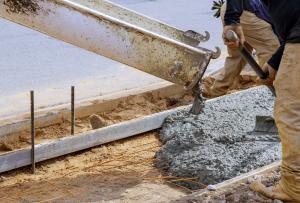
Cracks in Concrete: Understanding the Risks and Necessary Repairs
Causes of Concrete Cracks
"Cracks in concrete can occur due to various factors, some of which develop over time, while others may result from construction practices or environmental conditions," notes Ordoyne.
Shrinkage Cracks – As concrete cures, moisture evaporates, causing shrinkage. If the drying process is too rapid or the mix has too much water, small cracks can form.
Settlement Cracks – When the ground beneath concrete shifts due to soil movement or poor compaction, the slab may crack under stress.
Temperature Fluctuations – Changes in temperature cause concrete to expand and contract, leading to cracks if the material cannot adjust properly.
Excessive Load – Heavy vehicles, machinery, or stored materials can put undue pressure on concrete surfaces, causing structural fractures.
Water Intrusion – Poor drainage can lead to water pooling around concrete structures, weakening the material and accelerating deterioration.
The Risks of Ignoring Concrete Cracks
Even minor cracks can become serious issues if left unaddressed. Some of the key risks associated with ignoring cracks in concrete include:
Structural Weakness – Cracks compromise the strength of concrete, increasing the likelihood of failure under pressure.
Water Damage – Moisture entering cracks can erode the material from within, leading to further deterioration and potential reinforcement corrosion.
Trip Hazards – Uneven surfaces caused by cracks pose safety hazards, particularly on sidewalks, driveways, and walkways.
Foundation Instability – In homes and commercial buildings, cracks in foundations can indicate movement that requires immediate attention.
Inspection and Repair Strategies
Regular inspection and timely repairs can mitigate the risks associated with cracked concrete. A thorough assessment determines the severity of the issue and the most effective repair method.
Visual Inspection – Identifying the type and extent of cracks helps determine whether they are superficial or structural.
Sealing Small Cracks – Hairline cracks can often be sealed with concrete-specific sealants to prevent moisture infiltration.
Epoxy Injection – For larger cracks, epoxy or polyurethane injections can restore strength and prevent further movement.
Slab Lifting or Leveling – If cracks are caused by settlement, techniques such as slab jacking or foam injection may be necessary to correct misalignment.
Resurfacing – In cases of widespread surface cracking, applying a new layer of concrete or overlay can restore structural integrity.
Preventative Measures for Long-Term Stability
Taking preventative steps during construction and throughout the lifespan of concrete structures can reduce the likelihood of cracks forming.
Proper Curing Methods – Ensuring that concrete is cured at a consistent rate prevents excessive shrinkage.
Reinforcement Placement – The use of rebar or wire mesh provides additional support and minimizes cracking.
Adequate Drainage – Directing water away from concrete foundations and slabs prevents soil movement and erosion.
Regular Maintenance – Periodic inspections and minor repairs can prevent small cracks from developing into larger structural problems.
Addressing Concrete Issues in Louisiana’s Climate
Louisiana’s climate presents specific challenges for concrete structures, including high humidity, frequent rainfall, and expansive clay soils that contribute to movement and settlement. These conditions make it particularly important to monitor concrete surfaces for signs of damage and address them promptly.
Taking action at the first sign of cracking helps preserve the lifespan of concrete surfaces and foundations. Property owners and builders should work with experienced professionals to ensure repairs are completed effectively, reducing the potential for further structural concerns.
Morgan Thomas
Rhino Digital, LLC
+1 504-875-5036
email us here
Visit us on social media:
Facebook
Distribution channels: Building & Construction Industry, Culture, Society & Lifestyle, Real Estate & Property Management
Legal Disclaimer:
EIN Presswire provides this news content "as is" without warranty of any kind. We do not accept any responsibility or liability for the accuracy, content, images, videos, licenses, completeness, legality, or reliability of the information contained in this article. If you have any complaints or copyright issues related to this article, kindly contact the author above.
Submit your press release

